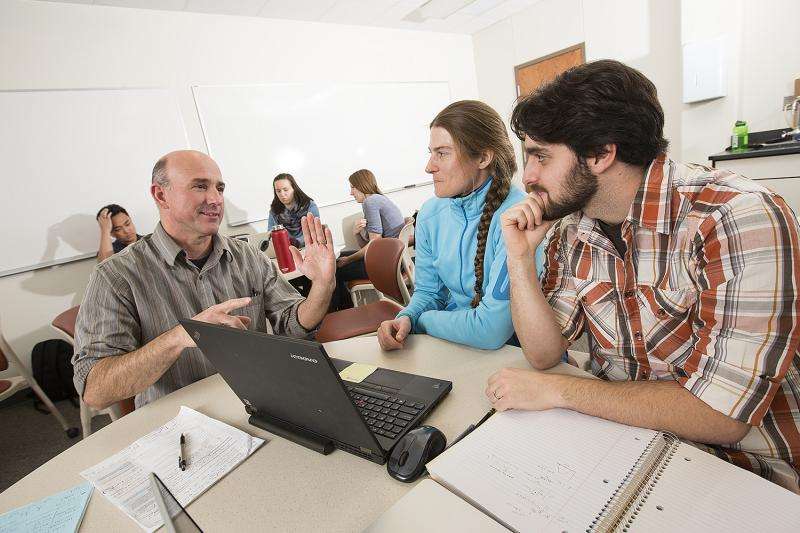Study finds ratio between speed of evolution, population change

Does evolution really trundle along like Darwin's famous Galapagos tortoise? And do the populations undergoing this evolution really grow and decline with the speed of a hare?
A new study led by UNL biologists has provided the first quantitative answer: not so fast.
Led by researcher John DeLong, the study set out to calculate how rates of evolutionary adaptation compare with the pace of population change in ecosystems. Though evolution was long considered to unfold much slower than ecological change – across millions of years vs. millennia, centuries or decades—more recent research has suggested that it might occur rapidly enough to drive shorter-term population shifts.
After unearthing 21 cases that examined organisms ranging from plankton to mammals, the study's authors found that population sizes generally change just four times faster than their members adapt—growing longer snouts or laying more eggs, for instance.
In the most extreme of those cases, population size shifted at a pace only 1 1/2 times the rate that new traits emerged.
"The deeper historical viewpoint is that evolution is super-slow compared to ecology, so that we don't need to even talk about them in the same breath," said DeLong, an assistant professor of biological studies. "The antithesis view has been that evolution is as fast as ecology, so that we have to always consider them in the same breath. That's basically the idea that evolution can happen fast enough that changes in traits will actually change the ecological dynamics as they go along.
"Nobody had really tried to answer this question in any systematic fashion. This was an attempt to address what we thought was a fundamental, founding principle for the idea of eco-evolutionary dynamics."
The team also discovered that a statistical relationship previously found among ecological populations—that the variation in population size will consistently equal the average size multiplied by itself—also applies to the evolution of new traits.
DeLong said the finding has a mathematical implication: When the relationship holds, rates of evolutionary adaptation cannot equal or surpass the pace of population change.
"That actually has consequences for generalizing our observations," DeLong said. "We don't want to make a biological conclusion just from the existence of this power law relationship, but if this is true, we should never see any (evolutionary adaptation) crack this envelope."
More information: John P. DeLong et al. How fast is fast? Eco-evolutionary dynamics and rates of change in populations and phenotypes, Ecology and Evolution (2016). DOI: 10.1002/ece3.1899
Journal information: Ecology and Evolution
Provided by University of Nebraska-Lincoln


















